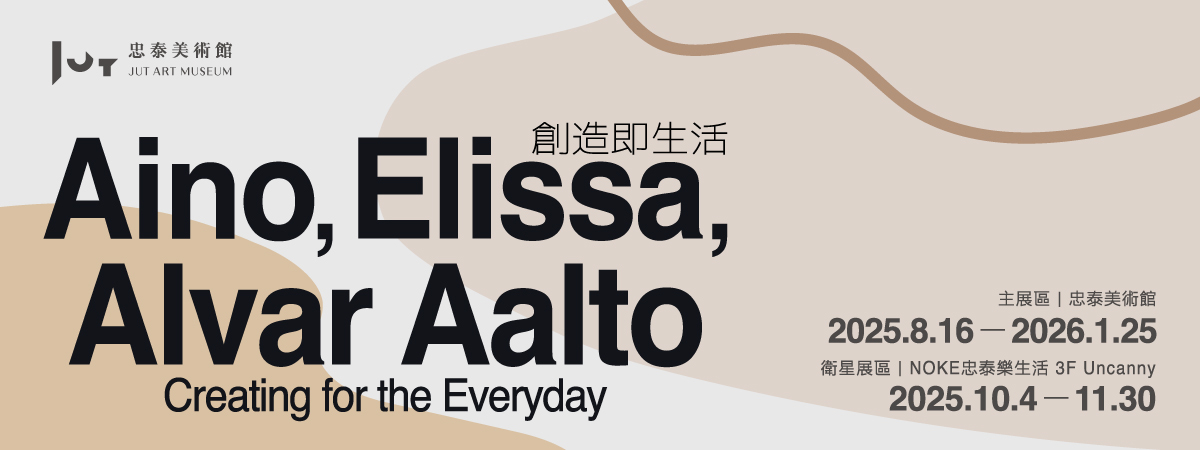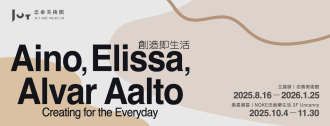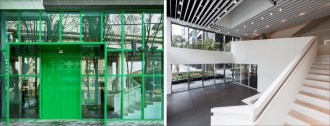Preface
Text / Jut Art Museum
As an iconic figure in 20th century modernist architecture, Alvar Aalto infused the warmth and psyche of daily life into modern architecture via his innovative design that blended functionality with a humanistic spirit. Extended from the scale of “home” to public buildings and urban spaces, his creations featured the fusion of nature, light, and materials in symbiotic harmony with the environment. His works can be seen across Europe and the United States, having a profound and enduring impact on contemporary architectural concepts and design praxis.
Living in the 1920s when Finland just declared independence, and meanwhile bearing a baptism of modernism and globalization, Aalto treated his native culture as the point of departure and used architecture as a language to communicate with the times. Whilst responding to modernization, Aalto’s works embodied the importance that Finnish society attaches to the symbiotic relationship with nature, the spirit of democracy, and the quality of life, and further opened a dialogue between his own culture and the international community.
Focusing on the dialogue between architecture and cities, the Jut Art Museum has endeavored to organize architecture exhibitions, including cross-disciplinary exhibitions of architecture and art, research exhibitions on architectural thoughts and movements, and solo shows of international architects. The exhibition Creating for the Everyday – Aino, Elissa and Alvar Aalto is a collaboration between the Jut Art Museum and the Alvar Aalto Foundation. Starting from Alvar Aalto’s life history and featuring a fine selection of important manuscripts, models, and furniture from the Foundation’s collection, this exhibition is the first of its kind in Taiwan to systematically introduce Aalto’s partnerships with his two architect wives, Aino and Elissa Aalto, in architecture, design, and daily life during different periods, with the aim of exploring the connection between architecture and people’s quotidian existence from the perspectives of their “home” and “co-creation.”
The Aaltos’ thoughtful consideration of people’s lives always found expression in their works. It’s the reason why their works are so touching. In their close collaborations, “home” was a space for living and working, as well as the fountainhead of inspiration and creativity that embodied the philosophy of “creating as a way of life.”
In the 21st century when our environment and lifestyle are undergoing a sea change, we seek to revisit the 50-year journey of co-creation among the Aaltos, appreciate Nordic culture’s emphasis on nature, light, and living spaces, and stimulate visitors’ reflections on creativity, cooperation, and symbiosis with nature, thereby raising new possibilities for cities and future living.
Exhibition Introduction
Text / Alvar Aalto Foundation
Architect Alvar Aalto (1898-1976) is known as one of the modern masters. Always working together with his architect wives, Aino and Elissa Aalto, he believed that architecture and good design can solve the challenges – or “problems” as Aalto called them – of human existence and society.
The Aaltos’ career began as a small-town architectural office in Finland, but eventually expanded over seven decades and into more than ten countries. The Aaltos were cosmopolitan but above all, humanists who shared the Modern Movement ideals of equality and social improvement. The Aaltos developed their own kind of gentle, organic style, and always worked with a special appreciation for the nature and the landscape.
Today, the Aaltos’ heritage consists of circa 300 realized buildings, as well as numerous design objects that are considered modern classics. This exhibition journeys through the inspiring career of the three architects and their tireless efforts for a quality everyday environment.
- Exhibition|Creating for the Everyday – Aino, Elissa and Alvar Aalto
- Date|2025.8.16 SAT-2026.1.25 SUN
- Venue|
- Main Venue|Jut Art Museum (No.178, Sec. 3, Civic Blvd., Da'an Dist., Taipei City 106, Taiwan)
- Satellite Venue|NOKE 3F Uncanny (No. 200, Lequn 3rd Rd., Zhongshan Dist., Taipei City 104053, Taiwan)
- Main Venue|Jut Art Museum (No.178, Sec. 3, Civic Blvd., Da'an Dist., Taipei City 106, Taiwan)
- Date|2025.8.16 SAT-2026.1.25 SUN
- Opening Hours|TUE-SUN 10:00-18:00 (Closed on Mondays)
- Admission|General TWD 150, Concessions TWD 100 (Student, seniors aged 65 and above, and groups of 10 or more)
- Free Admission for the disabled and a companion, children aged 12 and under (Concessions or Free Admission upon presentation of valid proof)
- Student Day|Free Admission once on WED (With valid student ID)
- Satellite Venue|NOKE 3F Uncanny (No. 200, Lequn 3rd Rd., Zhongshan Dist., Taipei City 104053, Taiwan)
- Date|2025.10.4 SAT- 2025.11.30 SUN
- Opening Hours|SUN-THU 11:00-21:30, FRI-SAT 11:00-22:00
- Admission|Free admission
- Organizer|Jut Art Museum
- Curatorial Team|Jut Art Museum, Alvar Aalto Foundation
- Cultural Partner|eslite member
- Media Partners|La Vie, MOT TIMES, ta magazine
- Event Partners|MOT CASA, Nordic lifestyle, NOKE JUT RETAIL, ONIBUS、Slice
- Satellite Venue Partner|Uncanny
- Special Thanks|Yao-Ting Wu, Tzu-Chen Liu, Min-Yan Chou, Yao-Pang Wang
Architect
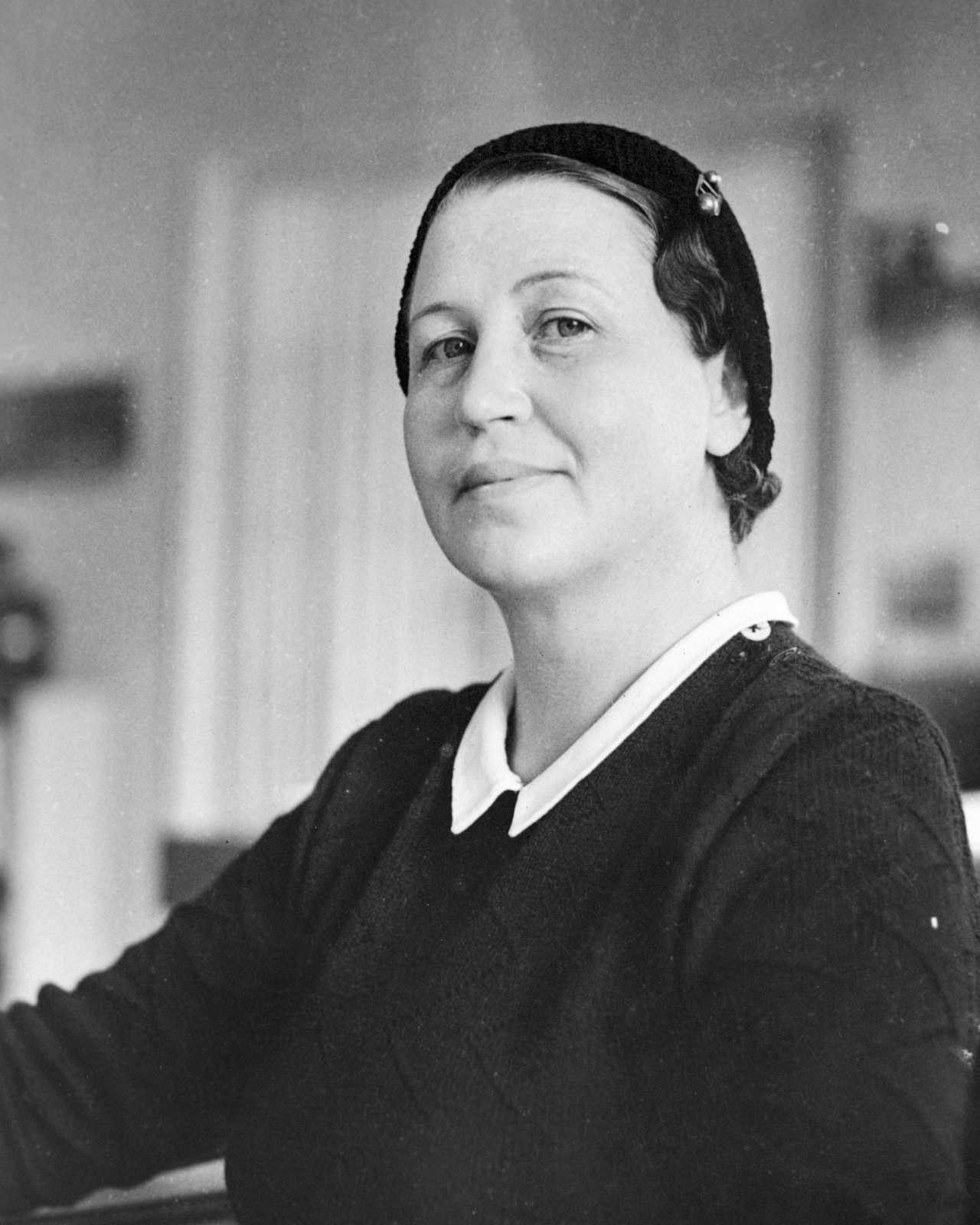
Aino Aalto (1894 – 1949)
Architect Aino Aalto married Alvar Aalto in 1924, and worked alongside her husband as a designer of equal standing. In the extensive output of Aalto’s office it is, however, hard to distinguish the roles of the different designers, since works mostly went by the name of the office.
Aino Aalto was especially interested in interior and furniture design, for which she had plenty of opportunities in Aalto’s office’s comprehensive building projects. As the company Artek was founded in 1935 to promote the growing production and sales of Aalto furniture, Aino Aalto became the first Design Director. She created the company’s still-recognizable, timeless, high-quality style. Aino’s modern values and strong sense of social responsibility flourished particularly in interior design related to childcare, such as in kindergartens, health centres and maternity clinics.
Aino Aalto was a skilled exhibition designer and her exhibition architecture for the Milan Triennial in 1936 won the Grand Prix. She was an accomplished photographer and an early adopter of the principles of modern photography. She also participated in the work of the Finnish Association of Women Architects, Architecta that was established in 1942.
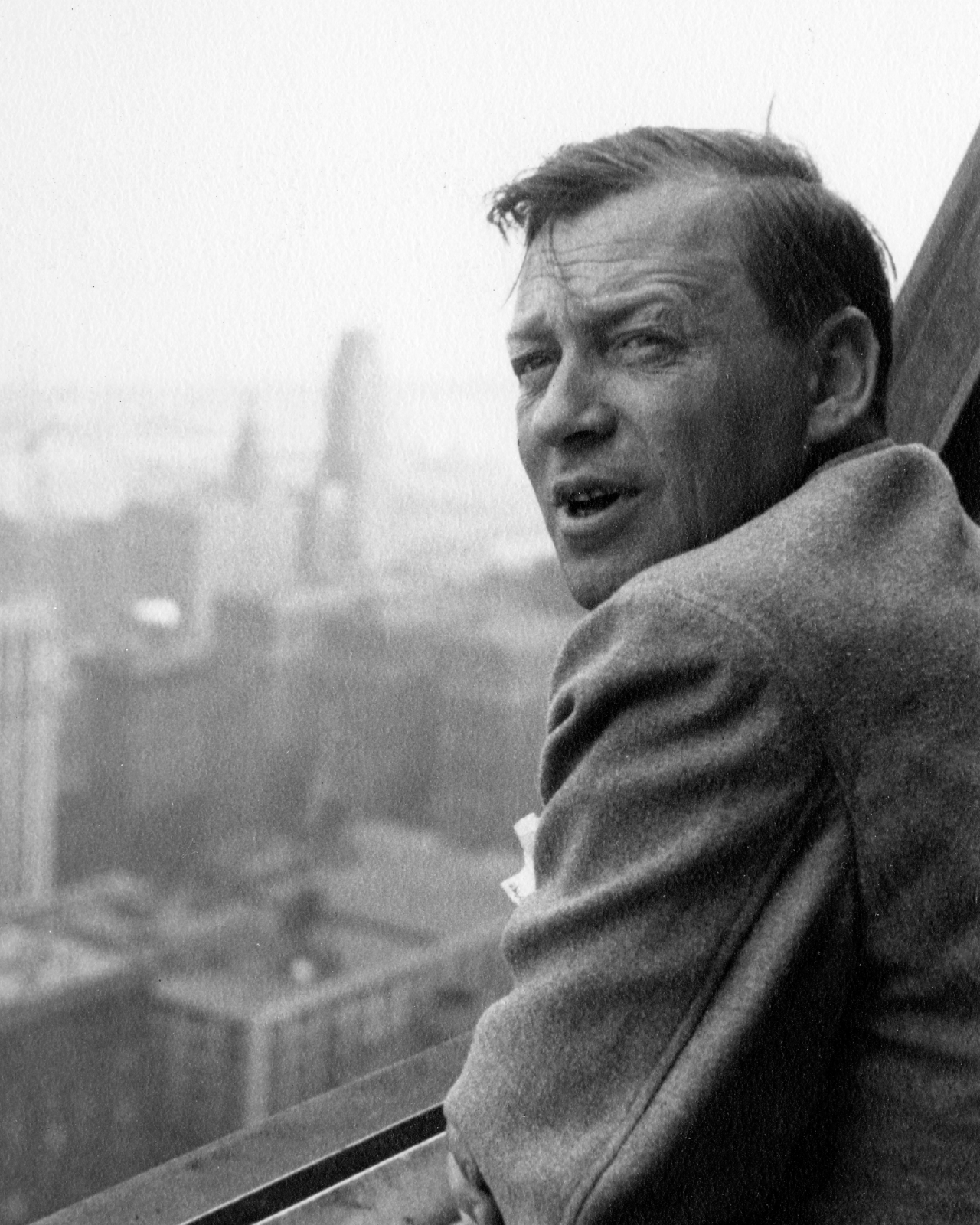
Alvar Aalto (1898 – 1976)
Alvar Aalto enjoyed an exceptionally rich and varied career as an architect and designer, both at home in Finland and abroad. He opened his architectural practice in 1923. From the late 1920s onwards, he made several journeys to Continental Europe on which he and his wife, architect Aino Aalto became familiar with Modernism, the International Style. This began a shift in the Aaltos’ own style and enabled them to make an international breakthrough, largely because of Paimio Sanatorium (1929-1933), an important modern milestone.
Aalto had adopted the principals of user-friendly, functional design in his architecture. From the late 1930s onwards, the architectural expression of Aalto’s buildings became enriched by the use of organic forms, natural materials and increasing freedom in the handling of space. Each building was treated as a complete work of art – right down to the furniture and light fittings. The design of Aalto furniture combined practicality and aesthetics with series production, encouraging a more beautiful everyday life in the home.
After Aino Aalto passed away, Alvar and Elissa were married in 1952. From the 1950s onwards, along with Elissa’s participation, Aalto’s architectural practice was employed principally on the design of public buildings, more and more on countries outside Finland.
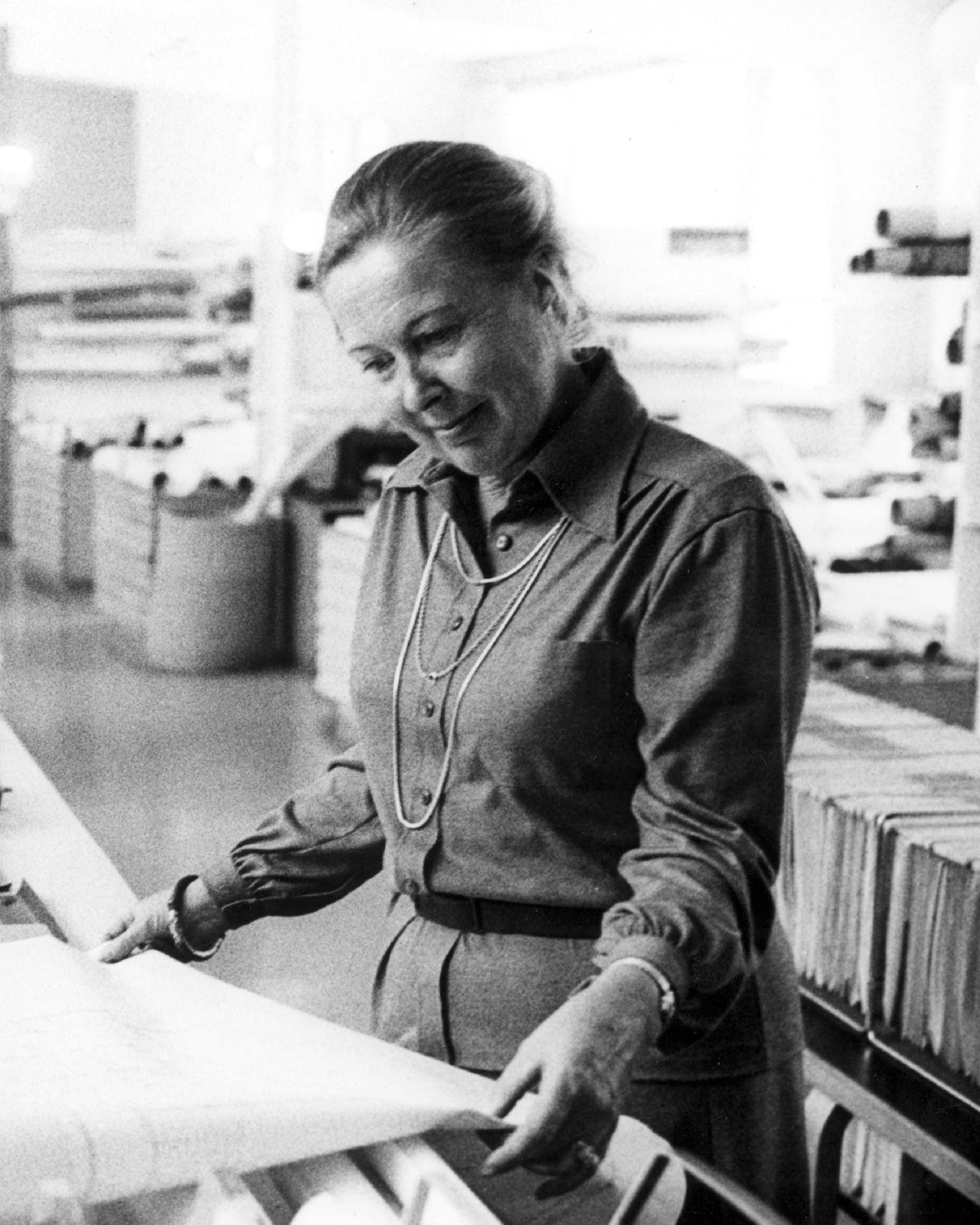
Elissa Aalto (1922 – 1994)
Architect Elsa Mäkiniemi began her long career in Alvar Aalto´s architectural office in 1949. Over the years she became his closest coworker and an interpreter of his ideas. After their marriage she took the name Elissa Aalto. She became a partner in Aalto’s office as a 36-year-old at the end of 1958. She participated in preparations of numerous competition proposals, as well as in the planning and supervision of realized projects. Starting in the 1960s, articles on the office’s work frequently mention Elissa Aalto alongside Alvar Aalto as the other main designer.
Following Alvar Aalto’s death, Elissa led the office in 1976-1994, bringing several unfinished building projects to completion. Carrying on Alvar Aalto’s legacy and fostering his material and intellectual heritage formed Elissa Aalto’s major life’s work. She worked actively on restoration and conservation of Aalto’s buildings. It was partly due to her influence that Aalto’s office’s drawing and document collection, along with the copyrights, were transferred to the ownership of the Alvar Aalto Foundation and were thus preserved as a coherent whole to serve the architecture researcher community.
Exhibition Team
- Exhibition Supervisors|Aaron Y. L. Lee, Alex Y. H. Lee, Shan-Shan Huang
- Curatorial Team|Timo Riekko, Mari Murtoniemi (Alvar Aalto Foundation)
Curatorial Team|Shan-Shan Huang, Ying-Peng Chen, Chia-Ching Lin (Jut Art Museum),
Curatorial Team|Yao-Ting Wu (Exhibition Advisor) - Coordinators| Yen-Hsiu Chen, Yu-Chen Tsai, Tsuei-Yi Jang
- Communications and Marketing|Yen-Shan Li, Chi-Yun Chang, Yu-Chin Liou, Yi-Ning Lin
- Public Service|Tsung-Ping Hung, Pei-Chun Tsai, Yu-Tzu Lin
- Administration Coordinator|Hsin-Yi Lin
- Visual Design|Idealform Co.
- Special Design|Very Studio|Che Wang Architects
- Exhibition Graphic Design|60 DEGREE
- Timeline Graphic Designer|Min-Wei Liu
- Lighting Design|LighTemp
- Multimedia Design|UN ART

